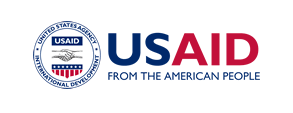The Health Policy Project ended in 2016. Work continued under Health Policy Plus (HP+) until 2022.
NEWS & VIEWS

Photo by Palladium
This piece was originally published in the Center for Global Health Policy's Science Speaks Blog
By: Ron MacInnis, Andrew Zapfel, and Nicole Judice
The global health community lost one of its stars on November 20, when Anita Datar of Palladium was among those killed in Bamako, Mali, where she was working to launch a new project that would improve that nation’s health policy and financing landscape. Previous blogs and news articles have discussed, broadly, Anita’s inspiring life and her work to improve the lives of others. However, we’d also like to share with the ScienceSpeaks expert community some more detailed and nuanced examples of Anita’s work in the response to HIV, and to shed light on the value that one global health professional can have for all of humanity.
| People Trained | Publications | Number of Health Facilities Supported | Public Health and HIV Projects |
|---|---|---|---|
| Anita led or managed the direct training of 3,000 professionals in 40 countries on technology use, gender and sexual diversity, GIS mapping, and ethics. | Anita wrote or contributed to more than a dozen publications on HIV, data for health, and country ownership of its HIV response | Anita’s work contributed to more than 800 health facilities in Kenya using improved electronic health records systems. |
Anita managed or contributed technical skills to more than a dozen USAID- and CDC-funded global and country-level projects. |
Leadership of U.S. global public health programs and institutions evolves, as do the mandates and strategies they aim to support. What remains constant, however, is the cadre of technical and management experts who transform public health goals into reality through direct engagement and support to the world’s under-resourced governments and their health systems, and to communities affected by HIV. Anita was one of those stalwarts. Over the past decade, she was a crucial actor in USAID- and PEPFAR-led efforts to achieve an AIDS-free world through direct technical capacity development for HIV stakeholders in their priority countries.
Anita was especially committed to bringing new ideas and new technologies into the mix to ensure that life-saving HIV medicines and health services reached millions of people in the world’s poorest communities. She provided technical assistance through the use of such tools as heat mapping technology and data analysis that allowed national and regional departments of health to adequately plan, implement, and sustain HIV services. Anita and the teams that she led also provided capacity development and training for healthcare workers and managers of health programs. These initiatives helped personnel develop sustainable skills, use new technologies to serve and monitor patients, incorporate planning approaches, and—particularly in the case of HIV—ensure an enhanced understanding of human behavior and sexuality in planning, budgeting, and decision making.
A previous blog post (Science Speaks, “Anita Datar, who worked to bring the world together in health, lost to attack in Mali”) noted Anita’s contributions to expanding the use of mapping to track HIV epidemics and health services. Through her leadership—carefully managed in collaboration with PEFPAR; USAID; the Global Fund to Fight AIDS, Tuberculosis and Malaria; and UNAIDS—more than 100 public health leaders were trained in the use of geographic information systems to improve planning and monitoring of health and HIV services in Bangladesh, Ghana, Rwanda, and Tanzania.
In 2011, as program manager for the Centers for Disease Control and Prevention-funded Kenya Health Information System project, Anita contributed to the establishment of an electronic health records system for HIV and tuberculosis patients in over 800 hospitals, clinics, and health facilities across Kenya. More than 750,000 men, women, and children now have access to high-quality, supervised health services.
With the USAID- and PEPFAR-funded Health Policy Project, Anita contributed to the development of a gender and sexual diversity curriculum to improve basic knowledge of human sexuality, gender identity, and human rights. Teams have since delivered the training to more than 2,500 people over the past year. Anita was a facilitator for the training of trainers, in which 11 people from 11 African countries were made facilitators on gender and sexual issues. She also trained PEPFAR and U.S. government staff in India, where participants noted a change in the way they planned or implemented programs for those in need.
In addition to conducting trainings, expanding electronic health records in Kenya, and promoting mapping for the HIV epidemic, Anita presented at numerous conferences and wrote over a dozen publications on these issues, expanding the knowledge base of the HIV response community. Through her commitment to HIV services and human rights, we have all seen a positive change in the way programs are run, both globally and locally. This is the type of change that would make anyone proud. For Anita, it is her legacy.
For additional examples of Anita’s work see below:
Making Data Count In The HIV Response: Thailand’s AIDS Zero Portal
Editor’s note: Anita Datar was one of 21 people killed by armed attackers in Mali, where she had traveled for work.
What's New
- Something to Build On: “Innovation Exchange” Celebrates the Health Policy Project’s Close and a New Beginning
- What Will it Take for Tanzania to Achieve ART Targets and Ensure Long-Term Sustainability of the HIV Response?
- Helping Kenya’s County Leaders Advocate for Increased Health Investments
- HPP Holds Working Meeting on Ensuring Responsible PEPFAR Transitions for Key Populations
- Health Policy Project Celebrates 2016 International Women's Day
- HPP Staff Participate in White House Conference on HIV Stigma Reduction

